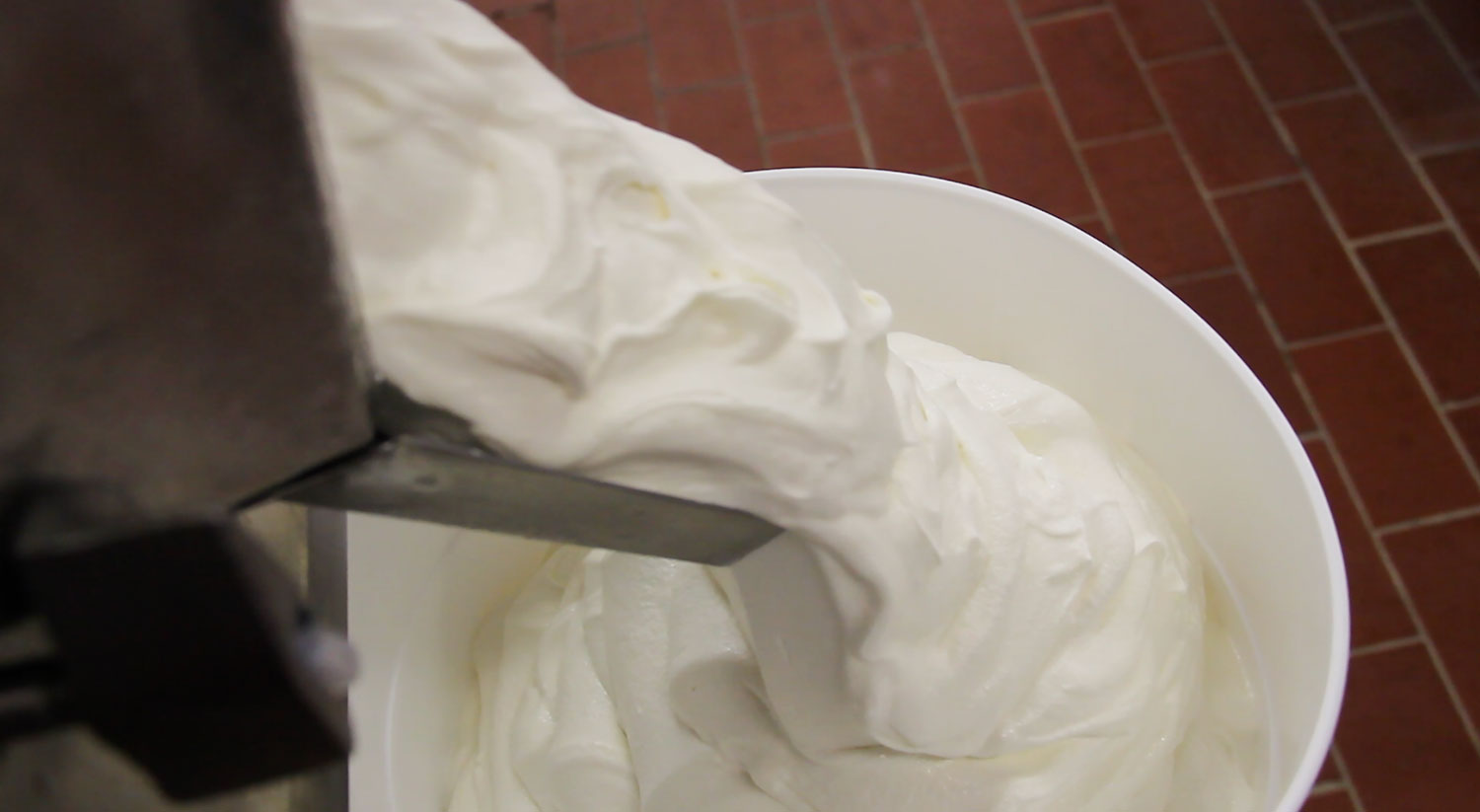
When it’s hot and humid in the summer, there is nothing better than a cold and creamy treat to bring refreshment. We’re talking about ice cream of course. With so many flavors, whether vanilla, chocolate, or fruity, there is something for everyone to get their sweet, chilling treat. Here at SUNY, our culinary programs are always churning out great desserts and sweets, including ice cream.
Morrisville State College is a school known for freshly made, creamy ice cream. The students and faculty produce a variety of ice cream flavors that impress New Yorkers statewide. But what goes in to making delicious ice cream? In order to find out, we talked to Patricia Witchley, the production plant supervisor at the Morrisville Auxiliary Corporation, some questions about their methodology.
First of all, good ice cream isn’t all subjective. There’s science behind it! The key to good ice cream, according to Patricia, is top quality ingredients. “Generally speaking, the higher the butterfat content in the ice cream mix, the smoother and creamier the ice cream is to the consumer.”

Ice cream is a treat that anyone can even make at home. Take it from Patricia. “Homemade ice cream starts with just a few basic ingredients: sugar, cream, milk, and vanilla. From there, you can experiment with adding flavors and mix-ins such as chopped candy or cookies to create the ice cream flavors you like. Commercially made ice cream mix needs stabilizers so the ingredients stay distributed throughout as it is transported, stored and put through the ice cream freezer.” Homemade ice cream just relies on the basics, so there’s a difference in flavor.
What about add-ons like large pieces of nuts or fruit such as whole almonds or cherries? Patricia advises that “They may freeze too hard in the ice cream if they are included as is. It is best to chop and freeze these types of add-ins separately ahead of time, then add them to the mix just before it is processed in the ice cream maker.”
All these quality ingredients need to be kept cold of course. The ideal storage temperature of ice cream should be set between -5°F and 0°F. When you’re ready to eat it, the ideal serving temperature is between 6°F and 10°F, making it easy to scoop, dip, and enjoy in proper form.
All of these methods are used when the students and staff at Morrisville mix up fresh batches of their own Molly’s Choice Ice Cream. This delicious treat is available to all students on campus, but the public can also sample some of their own at the Copper Turret Restaurant in Morrisville, or buy some for home at the Nelson Farms Country Store in Caseonvia.
Now that we know the science behind good ice cream, which flavor is best? Well that depends on your preferences of course. But for someone like Patricia, who makes and serves dozens of gallons of ice cream every week, she has her own choices.
“Our vanilla ice cream is rich, creamy and smooth, and is our most popular flavor. It can be enjoyed on its own, with toppings, in milkshakes, on cones, and paired with desserts or pies. But my personal favorite is a root beer float.”
Mmmm… Getting hungry for some ice cream yet?



